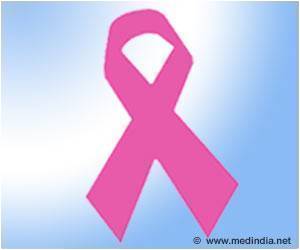Highlights
- Targeted, in vivo CRISPR gene therapy is used to stall the progress of triple-negative breast cancer
- Triple-negative breast cancer (TNBC) lacking in estrogen, progesterone and HER2 receptors is the deadliest of all breast cancers with the highest mortality rates
- This aggressive metastatic cancer has limited treatment options confined to surgery, chemotherapy and radiation
- CRISPR genome editing was used in vivo through an injection into live mice with TNBC
Read More..
Facts About Triple-negative Breast Cancer
Triple-negative breast cancer (TNBC) lacking in estrogen, progesterone and HER2 receptors is the deadliest of all breast cancers with the highest mortality rates. TNBC affects nearly 12 percent of women with breast cancers and involves the BRCA1 gene mutation. This aggressive metastatic cancer has limited treatment options confined to surgery, chemotherapy and radiation. There is a need to evolve new therapeutic options to tackle TNBC.A group of researchers led by Peng Guo, PhD and Marsha Moses, PhD, at the Vascular Biology Program at Boston Children's have successfully used targeted, in vivo CRISPR gene therapy to stall the progress of triple-negative breast cancer.
Does CRISPR Gene Editing Stop Breast Cancer Progression?
CRISPR gene editing holds out immense promise in tackling this type of aggressive metastatic cancer. However, the challenge was in the delivery of safe, non-toxic, effective non-viral vector systems for in vivo gene editing.The study reports the synthesis and application of a tumor-targeted nanolipogel system (tNLG) for CRISPR gene editing in TNBC. This approach uses a soft nanolipogel made of non-toxic hydrogels and fatty molecules.
Antibodies are then attached to the gel’s surface and guide the CRISPR nanoparticles to the exact tumor site. The antibodies are designed to recognize their target, ICAM-1 which is a molecule identified by Marsha Moses Lab (one of the study authors) in 2014 as a novel drug target for TNBC.
The soft and flexible gel particles successfully fused with the tumor cell membrane and entered the tumor to deliver the CRISPR load. As the CRISPR system entered the tumor cells, it knocked out the breast cancer oncogene Lipocalin 2 (Lcn2) which is primarily responsible for aggressive tumor growth and metastasis. Knocking out this oncogene Lcn2 stalled the tumor’s aggressive growth and prevented metastasis. The treated mice did not show any signs of toxicity.
Is CRISPR Gene Editing Safe?
Peng Guo, the study’s first author, used a soft nanoparticle enabled deeper penetration of the tumor cells with minimal side effects. They can also deliver a larger CRISPR load using this method. This method safely arrested the tumor growth by nearly 77 percent with no observed toxicity in normal tissues.According to Moses’ team, while the study focused on TNBC; they believe this safe CRISPR platform can be used to treat pediatric cancers and also deliver conventional drugs to tumor sites. This system can carry larger load of drugs and target the tumor precisely and effectively.
The study was funded by the National Institutes of Health (R01CA185530, 1DP2CA174495) and the Breast Cancer Research Foundation.
This proof-of-principle strategy was used in both mice and human tumor cells and is patent protected. The study was reported in the journal PNAS.
References:
- Novel CRISPR system could halt growth of triple-negative breast cancer - (http://discoveries.childrenshospital.org/triple-negative-breast-cancer-crispr/)
- Therapeutic genome editing of triple-negative breast tumors using a noncationic and deformable nanolipogel - (https://www.pnas.org/content/early/2019/08/20/1904697116)
Source-Medindia















